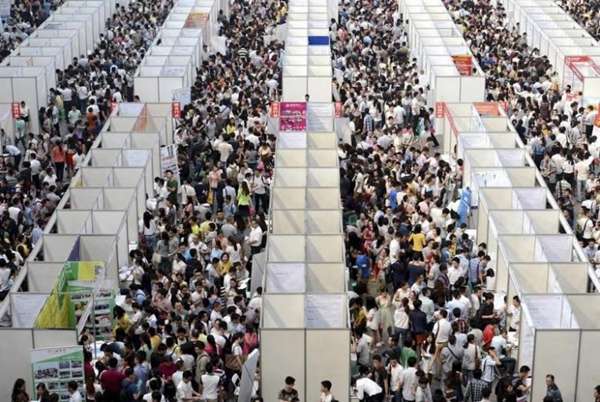
From 2013 to 2016, China’s unemployment rate in 31 major cities stabilized at around 5 percent.[Photo/Xinhua]
China was nearly 90 percent of the way to its target of creating 11 million new jobs in 2017 at the end of August, the National Bureau of Statistics (NBS) said, as the government fights to stabilize employment as millions of workers face redundancy due to mergers and reorganization in industries bogged down by overcapacity.
Some 9.74 million new jobs were created in China’s urban regions from January to August, and the unemployment rate has fallen to its lowest level since 2012, according to an NBS report released on Oct 10.
China’s nationwide unemployment rate stood at 4.83 percent at the start of September, NBS chief Ning Jizhe said at a news conference.
The number of people migrating away from their hometowns for work rose 2.1 percent in the second quarter compared with the same period last year, Ning added.
From 2013 to 2016, China’s surveyed unemployment rate in 31 major cities stabilized at around 5 percent.
Despite a lower speed of growth in the past two years, continuing economic expansion has made it possible to create more jobs than before. China is aiming to maintain the registered urban unemployment rate at under 4.5 percent for 2017.
The country is deep into an official campaign to cut industrial overcapacity, most notably in steel. Many jobs have been lost as a result.
Housing is also a major issue in a country with a huge migrant laborer population that fuels urbanization.
According to the NBS, China is formulating a set of property control measures that will have long-lasting effects, and will unveil the measures at an appropriate time.
Steps taken by the government to rein in the overheated property market have also been effective and will remain in place, Ning added.
Property sales continued to cool in the first eight months of this year, NBS data showed. The area of unsold commercial housing stood at 623.5 million square meters at the end of August, down by 12 percent from a year earlier.
